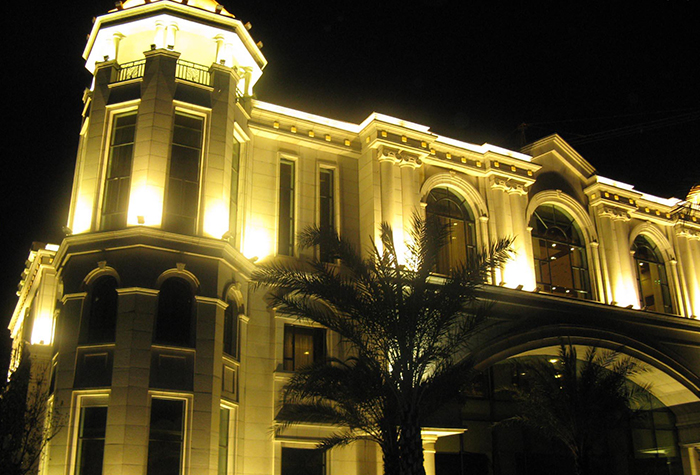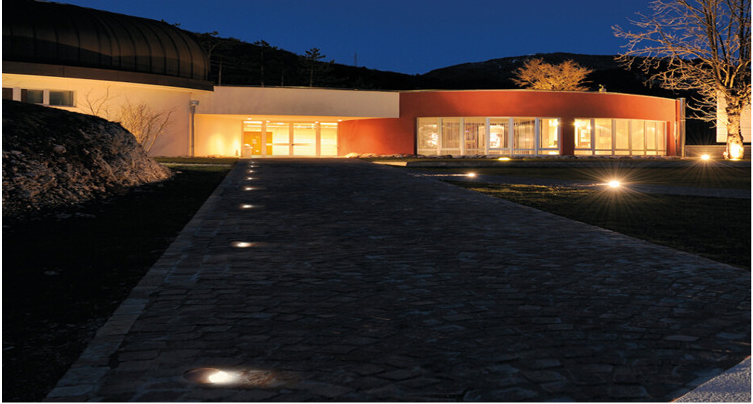Company News
LED Lighting for Hospitals and Health Care Facilities

Hospitals and Health Care Facilities employ a variety of indoor and outdoor lights, all of which are candidates to upgrade to LED Lighting. Besides the obvious energy savings and longer life and therefore less maintenance, LED Lights in Health Care Facilities offer other benefits
1. Higher Quality of Light: LED lights are better sources of light for two reasons. First, the quality of light, measured as Color Rendering Index (CRI) is typically higher most if not all the times than the traditional light sources they replace. Secondly, LED lights do not flicker like fluorescent light sources. While flickering may not seem like an issue, working under lights that flicker can cause eye strain and even headaches. It’s been our experience that every time we retrofitted a hospital with LED lights, not only did the light levels improve, the staff talked about how much nicer it was to work under LED lights.
2. Save Energy – therefore – Save Money: A typical fluorescent tube retrofit to LED tubes saves you at least 50% or more in less energy used. A typical HID bulb converted over to LED can save you as much as 75% or more. This is real $s that you don’t have to spend while maintain the same if not better light levels you currently have. The majority of our LED lights are rebate eligible, either registered under DesignLights Consortium (DLC) or Energy Star. All our lights come with either a 5 or 10 year warranty.
3. Saving energy by turning lights off with controls. Unlike HID lights liked Metal Halide, it does make sense to add motion controls to LED lights to be able to turn them on and off in areas where there is little activity. This activity may cycle throughout the day, busy at times and not as busy in other periods. Adding a motion control would allow for these lights to turn on instantly, and then turn off when there is no activity. And the best energy savings is always when a light is turned off. So for areas of your facilities, such as parking structures, basements, closets or stair wells, nothing saves more energy than ‘OFF’, so talk to us about adding a motion sensor or photocell to how keep those lights off when they are not needed.
Reduction in energy at hospitals is not a complicated scenario. Converting over to LED technology produces better quality light and can save you 50%+ on your energy bills. It should also reduce your maintenance bills as LED technology lasts longer than the incandescent, HID and fluorescent technology that it replaces.
Also, let’s not forget the dangers of fluorescent lighting. Broken tubes can be dangerous in facilities with open-plenum air handlers. Mercury dust contained in the tubes must be thoroughly swept up and cleaned. The Environmental Protection Agency (EPA) is now including warning labels on all fluorescent products clearly stating the hazards of using these products. With LED technology, no dust is contained within the product.This is designated by the RoHS certification (Restriction of Hazardous Substances) which ensure lights including this certification is safe to use and dispose.
Outdoor Lights

Outdoor Lighting in hospitals and health care facilities typically consists of outdoor parking lots or parking garages. In parking lots, we typically see area lights such as shoe boxes as well as led cobra heads. Most tend to be HID light sources, such as Metal Halide and High Pressure Sodium. Most lights tend to be either 250W, 400W or 1000W.
Outdoor Lights

Outdoor Lighting in hospitals and health care facilities typically consists of outdoor parking lots or parking garages. In parking lots, we typically see area lights such as shoe boxes as well as led cobra heads. Most tend to be HID light sources, such as Metal Halide and High Pressure Sodium. Most lights tend to be either 250W, 400W or 1000W.
In parking structures, we typically see small HID canopy lights of linear strip fluorescent fixtures. Both can be upgraded or retrofitted with new LED fixtures of LED retrofit kits. Controls can be added to turn off lights when not needed.
There are 2 options when it comes to converting over to LED. You can retrofit your existing fixtures or you can replace your existing fixture. There are some basic questions you should ask yourself when trying to decide whether to replace or retrofit. Generally speaking, retrofitting is far more cost effective than replacing. Retrofitting allows you to re-use your investment in your existing fixtures. The retrofit kits themselves are ETL Listed and DLC Premium Qualified, They are safe and eligible for the highest rebates available from your utility company (rebates are supplied by your utility company. They are not always available, contact us and we can help you find all available rebates).
Our retrofit kits are built to last and are backed with a 10 year warranty. So in terms of reliability, there is no reason to choose a new fixture over a retrofit solution because your investment in either will not be shortened by shorter life cycle of the retrofit.
If your fixtures are old, failing or leaking water, then it does makes sense to replace your existing fixtures, Retrofit kits require a dry environment, installing them into a fixture that leaks or has yellowed lenses does not make sense.
Retrofit kits install in most (but not all) existing fixtures. There are always exceptions. Low pressure sodium fixtures can present a problem due to the nature and physical characteristics of those bulbs.
Copyright © FANGUANG LIGHTING Co., LTD All right reserved









